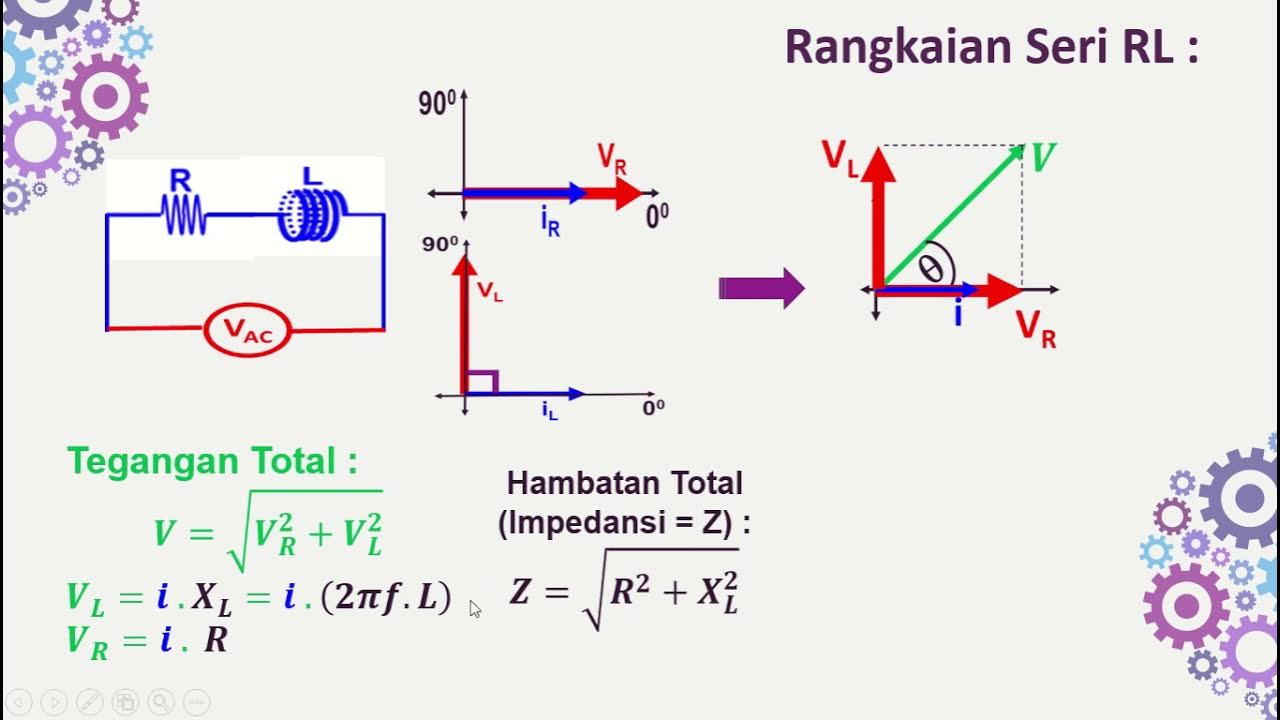NUEVO PAN CONTROL vs MOD ANTERIOR
Summary
TLDRThis video explains the use of a megohmmeter for testing insulation resistance, focusing on the behavior of impedance in parallel circuits. The speaker demonstrates how the megohmmeter injects small currents to measure resistance, explains the differences between resistance and impedance, and shows how parallel and series configurations affect circuit performance. The video also highlights how to detect insulation faults using various tools like a continuity tester, emphasizing the importance of accurate detection in electrical circuits. Practical examples are provided to clarify key concepts.
Takeaways
- 🔧 The megger is not a constant power source but used for insulation resistance testing with voltages between 100V to 1000V.
- ⚡ When two instruments are placed in parallel, their impedance decreases compared to when they are measured individually.
- 🧮 Parallel resistances do not sum directly, and the equivalent resistance can be calculated using a specific formula.
- 🧑🏫 For multiple resistances in parallel, the second formula involves reciprocals and works for more than two resistances.
- 💡 Impedances are different from pure resistances as they involve capacitors, diodes, and inductors, and require a more complex calculation.
- 📏 The impedance formula involves taking the square root of the sum of resistance squared and the difference of inductive and capacitive reactance squared.
- 📉 A fault in insulation might be indicated if the reading is between 0.8 and 0.9 ohms, despite the regulations allowing up to 0.5 ohms.
- 🔍 The 'Pan Control' tool is useful for pinpointing faults in insulation, especially for identifying ground faults in complex circuits.
- 🛠️ The sensitivity of two 'Pan Control' devices differs slightly, with the newer one being more sensitive and capable of detecting up to 1.3 ohms.
- 📊 The instrument is versatile, capable of testing AC/DC voltages up to 1000V, measuring resistances, and detecting phantom voltages.
Q & A
What is the main purpose of a megohmmeter?
-A megohmmeter is primarily used to measure insulation resistance. It is not a power source but can inject voltages of 100, 500, and up to 1000V to test the insulation properties of electrical components.
Why is it important to consider the type of current a megohmmeter injects?
-The megohmmeter injects a small current of 1.8 to 2 mA. This current helps in measuring the resistance without providing a constant voltage, which is crucial for accurately assessing the insulation resistance.
How does connecting two instruments in parallel affect their impedance?
-Connecting two instruments in parallel reduces the overall impedance compared to when they are connected in series. This happens because the current has multiple paths to travel, effectively lowering the total resistance.
What is the formula for calculating equivalent resistance in parallel circuits?
-The equivalent resistance in parallel circuits can be calculated using the formula: R_eq = (R_1 * R_2) / (R_1 + R_2) for two resistances. For multiple resistances, the formula is 1 / R_eq = 1 / R_1 + 1 / R_2 + ... + 1 / R_n.
What distinguishes impedances from pure resistances?
-Impedances differ from pure resistances as they include both resistive and reactive (inductive and capacitive) components. The formula for impedance (Z) is Z = sqrt(R^2 + (X_L - X_C)^2), where X_L is inductive reactance and X_C is capacitive reactance.
What indicates a potential insulation fault according to the speaker's experience?
-According to the speaker's experience, an insulation fault may be present if the resistance reading is around 0.8 to 0.9 MΩ, even though the regulation considers values below 0.5 MΩ as problematic.
How can a pan control tool help in locating faults in electrical installations?
-A pan control tool helps locate faults by emitting sounds when there is continuity or a fault. It is useful for narrowing down fault locations, such as finding where a cable might be damaged by tracking the sound signal.
What is the difference between continuous and intermittent sound signals in fault detection?
-Continuous sound signals indicate that the resistance is below 0.5 MΩ, suggesting a strong fault. Intermittent sound signals suggest the resistance is above 0.5 MΩ, indicating a less severe fault.
Why might an instrument need to be reactivated during testing?
-Instruments may go into standby mode to save energy. Reactivating ensures they are fully operational and capable of accurate readings, especially when dealing with low resistance values.
How can the phase and neutral be identified using a polar tool?
-The phase can be identified by touching the conductor with the polar tool and pressing the designated button. If the tool lights up, it indicates the presence of a phase. This helps distinguish between phase and neutral conductors.
Outlines

Dieser Bereich ist nur für Premium-Benutzer verfügbar. Bitte führen Sie ein Upgrade durch, um auf diesen Abschnitt zuzugreifen.
Upgrade durchführenMindmap

Dieser Bereich ist nur für Premium-Benutzer verfügbar. Bitte führen Sie ein Upgrade durch, um auf diesen Abschnitt zuzugreifen.
Upgrade durchführenKeywords

Dieser Bereich ist nur für Premium-Benutzer verfügbar. Bitte führen Sie ein Upgrade durch, um auf diesen Abschnitt zuzugreifen.
Upgrade durchführenHighlights

Dieser Bereich ist nur für Premium-Benutzer verfügbar. Bitte führen Sie ein Upgrade durch, um auf diesen Abschnitt zuzugreifen.
Upgrade durchführenTranscripts

Dieser Bereich ist nur für Premium-Benutzer verfügbar. Bitte führen Sie ein Upgrade durch, um auf diesen Abschnitt zuzugreifen.
Upgrade durchführenWeitere ähnliche Videos ansehen

Series & Parallel Circuit, Electrical Safety Devices | Grade 8 Science DepEd MELC Quarter 1 Module 6

Rangkaian RLC Seri

ASSOCIAÇÃO DE RESISTORES: em série e em paralelo | Cortes dos Aulões do Enem | Física | Antônio

Rangkaian Seri RL-RC-LC dengan Sumber AC

BAB 4 LISTRIK, MAGNET DAN SUMBER ENERGI ALTERNATIF - PART 2 (IPA Kelas 9 Kurikulum Merdeka)

Hambatan Pengganti Rangkaian Seri, Paralel Dan Campuran
5.0 / 5 (0 votes)
